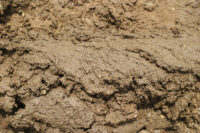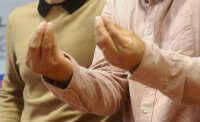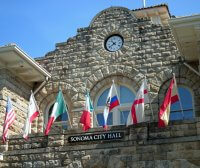Considering the immeasurable diversity of forms of life in this world – tube worms breathing methane at the mouth of 800 degree volcanic vents at the bottom of the ocean, lichens digesting the minerals in rocks for survival, worms living inside glaciers, bacteria that grow “legs” to move across a surface, two-legged hominids that fly to the moon, for example – it’s natural to wonder why such immense variety exists.
The life force within us and all living things is vulnerable but powerful, flexible but strong, specialized but adaptive. According to the ancient Chinese Hwa-Yen Buddhist School of Totality, life exhibits six characteristics: Universality and Particularity – life finds ways to fill every ecological niche while also closely defining the limits of survival for any particular species; Sameness and Difference – seen in the common underlying genetic framework of living things, but exhibited in the diverse forms in which life appears; and Integration and Disintegration – embodied by the interdependence of life-forms and the environment, and the truth that no single individual is indispensable.
In general terms, living things obey one over-arching imperative: to reproduce. Microscopic DNA within our cells divides and replicates itself, and so it is that all living things strive for replication. This is not true for animals only; plants, bacteria, viruses, fungi and all living things reproduce. Each one of us is the result of literally billions of generations of survival and reproduction, a lineage stretching all the way back to life’s very beginnings. If genealogy interests you, examine the contents of a drop of pond water in a microscope and you will more or less see how you looked a few billion years ago.
We do not control our conception, nor can we prevent our eventual death. These events inextricably bracket our brief existence, providing bookends to the narrative self created in between. People cannot remember being born (at least I can’t), but we all know that death lies ahead. Beyond that we can be absolutely sure of nothing. Indeed, there is great speculation about what happens after death and it is the stuff of legend, religion, myth, and movie; in such ideas we may find comfort or despair, depending upon what we believe. Faith can be strong, weak and non-existent. Suffice to say, the boundary of death is as irrevocable as birth; neither exists in isolation. Accordingly, birth and death are simply two faces of the same coin – an ultimately inseparable non-dual reality.
Though natural and inevitable, death nonetheless alarms us. It might be its finality, or our fear of prolonged suffering. Whatever fears we have about death and dying, it is at birth when human suffering indisputably appears.
We have no absolute knowledge of existence before conception, and that is matched by our lack of absolute knowledge of what happens after death. Life itself does not dwell on this mystery; mystery and confusion are our own very human creations, and as such are essentially irrelevant. When we ask, “Why me?” we are posing a question created by our confusion about birth and death, suspicious that some sort of practical joke has been played. In a certain sense, one has. We did not ask to be here, but now that we are we don’t want to leave.
When you think about it, it’s pretty funny.







One reason many people are confused about the meaning of life is that they do not understand the origin of life. ..A commonly accepted explanation for the origin of life is organic evolution – the hypothesis that man evolved from lower animals which in turn came from simpler life forms all the way back to the first microscopic life which sprang accidentally from non-living matter. The same is true for all living things…But evolution requires that when you go back far enough non-living matter somehow came to life by chance where there was no life before.